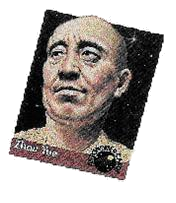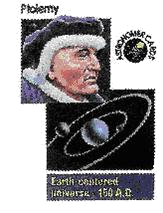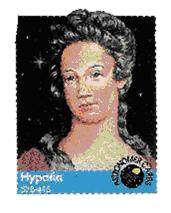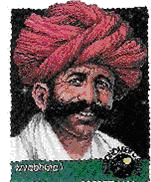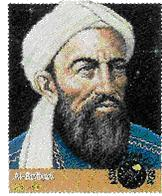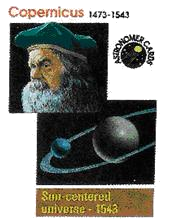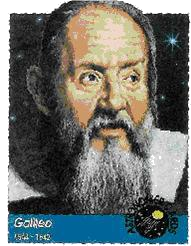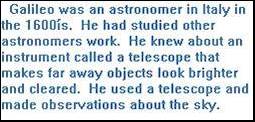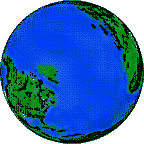
THE EARTH’S MOVEMENTS
Unit Overview
In previous units, you have studied
about galaxies, nebulas, the solar system and the introduction to the rotation
of the earth. In this unit you will look more deeply into the rotation of the
earth, the relationship of the earth to other parts of the solar system, and
the characteristics of the earth and its orbit around the sun. Good luck as you
experience the wonder of the earth and its intricate movements.
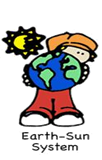
For
thousands of years, people have watched the stars at night. The stars appear to
rise and set slowly as the night goes by. From night to night, some points of
light seem to move among the stars. These points of light are the planets. Like
the earth and the moon planets do not make their own light, but rather reflect
light from the sun. People have known for five thousand years that planets are
satellites of the sun. This means that they revolve around the sun. A
satellite is an object that revolves around another object. Our moon is a
satellite of the earth. As you studied in detail in a previous unit, the nine
planets that orbit the sun from the sun outward are Mercury,
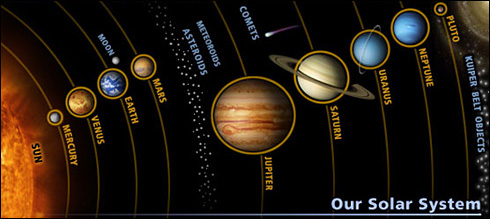
The earth like the other planets travels in a
path 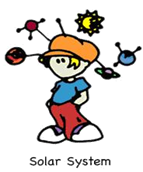 around,
orbit, the sun. Their orbital paths are in the shape of an ellipse,
which is a circle that has been flattened a little. It is more oval shaped. The
movement of the earth around the sun is called a revolution because the
earth is revolving around the sun. It takes the earth 365 days to travel once
around the sun. Why does the earth do this? GRAVITY! The gravity of the sun pulls the earth nearer and that
keeps the earth from traveling out into space.
around,
orbit, the sun. Their orbital paths are in the shape of an ellipse,
which is a circle that has been flattened a little. It is more oval shaped. The
movement of the earth around the sun is called a revolution because the
earth is revolving around the sun. It takes the earth 365 days to travel once
around the sun. Why does the earth do this? GRAVITY! The gravity of the sun pulls the earth nearer and that
keeps the earth from traveling out into space.
The earth revolving around the sun is
not the only motion of the earth! The earth also spins. Imagine spinning a basketball
on your finger. Now, imagine a line drawn from your finger up through the
basketball. The ball is rotating around this line, called an axis. Each time
the ball makes one full spin around its axis, it has made one rotation. The
earth spins on its axis. As the earth spins part of the earth faces the sun.
This part of the earth is lit by the
sun and experiences daylight. The part of the earth which is facing away from
the sun is in darkness. Can you guess how long it takes the earth to make one
rotation on its axis? If you said 24 hours, you are correct.
The earth is constantly rotating on its
axis and revolving around the sun at the same time. To understand this two-way
movement of the earth, try this experiment:
A.
Place a ball on the floor. Pretend this ball is the sun.
B. Pretend you are the earth.
C. As you stand in place, begin to spin slowly round and round. This spinning motion
is like the earth rotating.
D.
Next, while you continue to spin move in a path around the ball. This circular movement around the ball is like the earth’s revolution around the sun.
As the tilt of the earth changes, parts
of the earth are closer to the sun. The seasons occur as a result of the
earth’s tilt on its axis. During the six months that the North Pole is tilted
toward the sun, the Northern Hemisphere gets more sunlight than the Southern
Hemisphere does. The atmosphere is warmer in the Northern Hampshire, resulting
in warmer weather. During this time the North Pole is tilted toward the sun,
the Northern Hemisphere experiences late spring, summer, and early fall. In the
Southern Hemisphere the result is late fall, winter, and early spring. The
Northern Hemisphere experiences its cooler weather when the North Pole is tilted
away from the sun.
![]() Why is the Summer Sun So
Powerful? (02:39)
Why is the Summer Sun So
Powerful? (02:39)
The summer and winter solstice occur in late
The
spring (vernal) and fall (autumnal) equinoxes occur in
late March and September each year. At the time of these two equinoxes, the sun
is directly above the Equator, and each hemisphere of the earth receives equal
numbers of hours of sunlight and darkness.
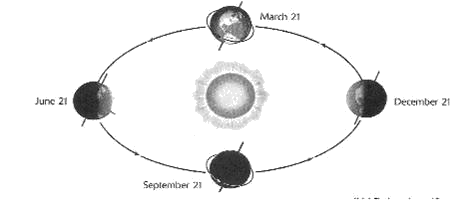
Look
carefully at the diagram above; then in questions #1 - #4 identify the summer
solstice, winter solstice, spring equinox and fall equinox.
![]() Spring's Unreliable Weather (03:09)
Spring's Unreliable Weather (03:09)
People Used to
Believe…
For
a long time no one knew that the Earth revolved around the sun. People thought
the sun moved around the earth. In fact astronomers have been working on space
theories for thousands of years. The ideas of many astronomers over the
centuries have helped to explain what we now know about our solar system. Below
is a group of astronomers who helped form these truths.
|
|
|
|
|
Around A.D. 150 |
|
|
|
|
|
|
|
|
|
|
|
|
|
|
|
Read More about Galileo……..
One night in 1610 Galileo looked into his
telescope at the planet Jupiter. He noticed Jupiter had four tiny moons.
Galileo watched the sky and observed that the positions of these moons changed
each night. The moons were revolving around the planet. He wondered if the
earth’s moon also revolved around the earth. Could it be the earth revolves
around the sun? Today we know Galileo’s theory was correct. You have read above
about the earth’s rotation and revolution. You have read that each one of these
movements affects our day and night cycle as well as our seasonal cycles. Now
let us take a look at the moon’s movements.
The Moon’s Movements
The moon is a satellite of the earth.
It is about one fourth the size of the earth, with a diameter of about 2,100
miles. The moon appears about the same size as the sun in the sky, but that is
only because the moon is so much closer than the sun. The moon is about 240,000
miles from the earth whereas the sun is 93,000,000 miles away. The moon orbits
the earth much like the earth orbits the sun. However, the moon completes its
orbit around the earth about once every 28 days. This orbit cause the phases of
the moon. The phases of the moon determine the amount of the moon you see at
night. For example, a full moon appears as a complete round circle. A new moon
occurs when you see no moon. There are eight phases of the moon that appear as
the moon completes its orbit around the earth. For a specific review of those
phases, go back to the previous unit.
To explore a model of Earth's yearly
revolution around the sun click on this link http://www.classzone.com/books/earth_science/terc/content/visualizations/es0408/es0408page01.cfm?chapter_no=visualization
and/or to view the Home Page click on the PDF File.
The moon has no light of its own, but
it seems to shine because it reflects the sun’s light. The moon has no
atmosphere and no life. The gravity of the moon is about one sixth as strong as
the earth’s gravity. Therefore, a person who weights 60 pounds on earth would
only weigh 10 pounds on the moon. The moon is covered with craters. These are
large holes cause by collisions between the moon’s surface and asteroids or
other large bodies. These craters cause a pattern to appear on the surface
which is why you may have heard the phrase, “the man in the moon”. This “face”
is called a characteristic of the moon. Now, we will take a closer look at
Earth and its many characteristics.
Characteristics of Earth
![]() What is Inside Our Planet? (01:16)
What is Inside Our Planet? (01:16)
As you have learned, Earth is the only
planet in the solar system on which life is known to exist. It is the largest
of the inner planets and is the third planet from the sun. Earth’s atmosphere
is about 78 percent nitrogen and 21 percent oxygen with traces of other gases.
Our planet has a core of molten metal and rock, with just a thin crust of solid
rock.
We can see the moon and the sun with
our naked eyes, but we cannot see the earth in the same way. Have you ever
wondered how it must look?
Well, it is one of the most beautiful
planets. Since ¾ of Earth is covered with water, it appears a very pretty blue
color. The entire planet is covered by a swirling, thin blanket of air with
scattered white clouds. An artist would paint its appearance as a sphere
covered mostly in blue with some darker colored land masses surrounded by thin,
white swirling air and clouds. You can be very proud of its looks.
